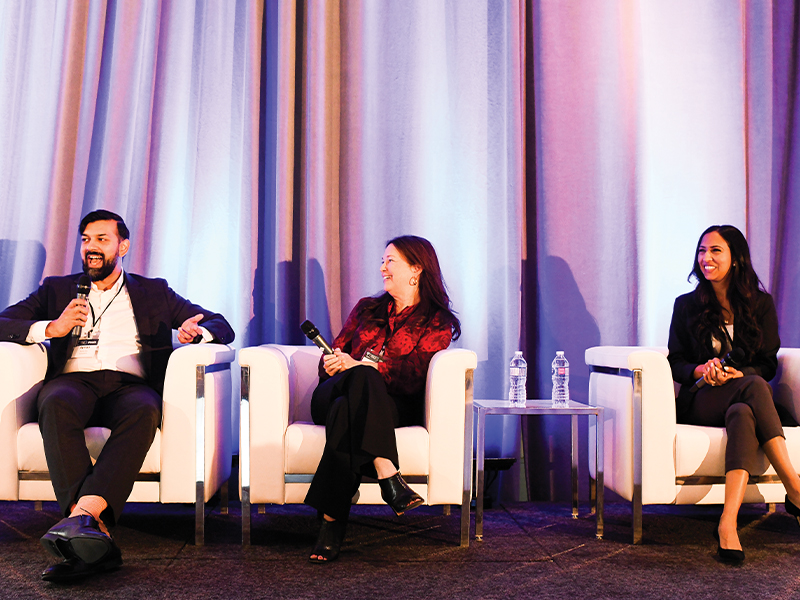
During the pandemic, employers are facing the “perfect storm” of major workplace disruption coupled with a poor mental-health baseline leading up to the crisis, according to Judith Plotkin (centre), vice-president of health solutions at People Corporation Inc., speaking during a panel session at Benefits Canada‘s 2022 Healthy Outcomes Conference.
“There was already huge pressure on the mental-health infrastructure here in Canada and huge pressure in terms of claims cost drivers. The No. 1 reason people were going on short- or long-term disability was mental health. We went into this with lots of vulnerability.”
Employers are also facing demographic headwinds, with Canada expected to experience a long-term labour shortage due to an aging workforce, she added. Every time an employee chooses an early retirement or goes on disability leave due to mental-health challenges, there’s a tremendous impact on the workplace.
Read: Leadership-driven mental-health strategy nets award for Scotiabank
While employee mental health has been a major focus at Scotiabank for years, the diversity of work arrangements during the pandemic have prompted the bank to reconsider its uniform approach to mental-health benefits, said Ayman Alvi (left), vice-president of global pension and benefits, also speaking on the panel.
“We’re all individuals and . . . everyone’s needs are different. How do we try to address those specific ones, whether it’s for people who are caregivers, whether it’s people in equity-deserving groups who have specific needs?”
Scotiabank provides employees with $10,000 per year in mental-health coverage and multiple well-being resources and programs, such as additional paid time off. The Workplace Safety and Insurance Board provides employees with an employee assistance program, peer support program and other resources, as well as a prevention and promotion campaign aimed at breaking down barriers and reducing stigma.
Zabina Meru (right), mental-health implementation advisor at the WSIB, said the organization initially began its mental-health strategy with a comprehensive list of programs, but quickly realized — through employee engagement surveys and anecdotal feedback — it needed to be a bit more targeted. In response, the WSIB trimmed its offerings to focus on the specifics, rather than taking a blanket approach.
For employers just starting to build their mental-health strategies, Plotkin encouraged them to follow that approach by evaluating their existing benefits coverage and wellness initiatives, looking at their data on claims drivers and getting out of their “HR echo chamber” by listening to a diverse range of employees.
Read: 2022 Mental Health Summit: How Bell Canada is evolving its workplace mental-health strategy
Going forward, both Alvi and Meru said they’re focusing on integrating mental-health supports into the course of a regular workday. Alvi’s team is working closely with the bank’s occupational health and safety team to make psychological safety “a regular part of your workday, in all your interactions and how you’re presenting with customers, with your colleagues, with leadership and thinking about how that works together.”
The WSIB is focusing on building skills and capacity around mental-health in the workplace, particularly for frontline employees who are more likely to see “critical incidents” in their work and ensuring leadership is equipped to support their teams and take care of themselves. Meru said evaluating the success of these programs will be crucial.
“The evaluation piece and those metrics and what it means to have a successful mental-health strategy, I don’t know if anyone’s really cracked that question. . . . For us, there’s a lot of work to be done in that space.”
Read more coverage of the 2022 Healthy Outcomes Conference.
